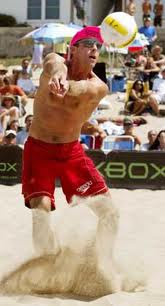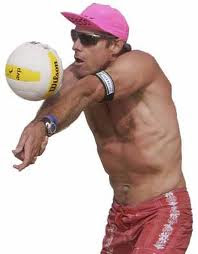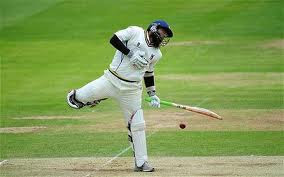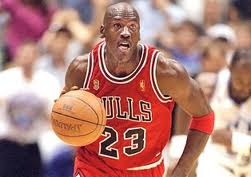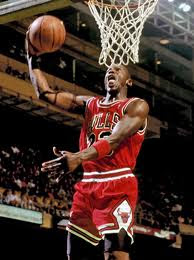Search This Blog
Sunday, 25 September 2011
Friday, 23 September 2011
Volleyball Player Karch Kiraly Biography
Karch Kiraly Profile
 Birth Date : November 3, 1960 (50 years old)
Birth Date : November 3, 1960 (50 years old)Home Town : Santa Barbara, CA
Resides : San Clemente, CA
Height : 6'2"
College : UCLAWeb Site : www.karchacademy.com
Biography:
The best volleyball player the U. S. has produced and quite possibly the best in the history of the sport, Kiraly learned the game from his father, Laszlo, a former member of the Hungarian national team who escaped from Hungary during the 1956 revolution.California's most valuable player as a high school senior, he entered UCLA in 1979 and led the school to three NCAA championships, in 1979, 1981, and 1982, and to a second-place finish in 1980. UCLA won 123 of 128 games during his career.
AdChoices
The 6-foot-3, 190-pound Kiraly was a member of the U. S. national team from 1981 to 1989. During that period, the team won gold medals at the 1984 and 1988 Olympics, at the 1982 and 1986 world championships, and at the 1987 Pan-American Games.
Kiraly was named the best player in the world after being selected for the all-tournament team in the 1986 world championships and he was most valuable player of the 1988 Olympic tournament, in which he had 137 kills, 16 block stuffs, 15 block assists, and a 60 percent kill percentage.
After leaving the national team, Kiraly played for Il Messaggero in Italy and was named most valuable player and best digger when the squad won the 1991 club world championship.
Kiraly has also starred in beach volleyball, winning a record 143 open tournaments. He teamed with Kent Steffens to win the first Olympic gold medal in the sport in 1996.
The Association of Volleyball Professionals (AVP) named Kiraly its most valuable player six times, in 1990, 1992, 1993, 1994, 1995, and 1998. He was also named the circuit's best offensive player in 1990, 1993, and 1994 and its best defensive player in 2002.
Labels:
Volleyball
James Blake Biography
Biography:
James Blake was born on December 28, 1979, in Yonkers, New York, into a tennis family. His father, Thomas, and his mother, Betty, met on the public tennis courts of New York. Thomas Blake learned to play tennis during his tenure in the United States Air Force, while Betty Blake picked up the game as a grade school student in Banbury, England. The Blakes played tennis regularly at the 369th Armory in Harlem and they took their young children with them. By the age of five James began playing tennis with his older brother Thomas, Jr.
When Blake was six years old, his family moved to Fairfield, Connecticut. His father worked as a salesperson for 3M Worldwide, a technology company, while his mother worked as a secretary at the local tennis club. Both Thomas and James took lessons at the Trumbull Tennis Club in Connecticut. It was at this club that Blake met Brian Barker, who began coaching Blake at age 12.
Yet the Blakes ties to Harlem remained strong. They continued to play tennis in Harlem on a regular basis and volunteered at the Harlem Junior Tennis League, a program aimed at introducing tennis to inner-city children. As a result of their parents' involvement in the Harlem program, Blake and his brother participated in the League's tennis clinics. As a biracial child, Blake moved comfortably between the very different worlds of middle-class Fairfield and inner-city Harlem with tennis as a bridge between them. It was at one of the tennis clinics in Harlem that James first heard the famous African-American tennis player Arthur Ashe speak. Ashe was the first black man to reach the number one rankings in international tennis. He was a pioneer for African Americans in a sport that has been dominated by whites. Ashe's passionate speech and his reputation as both a great tennis player and a well-respected person inspired Blake to consider a career in tennis.
James Blake was born on December 28, 1979, in Yonkers, New York, into a tennis family. His father, Thomas, and his mother, Betty, met on the public tennis courts of New York. Thomas Blake learned to play tennis during his tenure in the United States Air Force, while Betty Blake picked up the game as a grade school student in Banbury, England. The Blakes played tennis regularly at the 369th Armory in Harlem and they took their young children with them. By the age of five James began playing tennis with his older brother Thomas, Jr.
When Blake was six years old, his family moved to Fairfield, Connecticut. His father worked as a salesperson for 3M Worldwide, a technology company, while his mother worked as a secretary at the local tennis club. Both Thomas and James took lessons at the Trumbull Tennis Club in Connecticut. It was at this club that Blake met Brian Barker, who began coaching Blake at age 12.
Yet the Blakes ties to Harlem remained strong. They continued to play tennis in Harlem on a regular basis and volunteered at the Harlem Junior Tennis League, a program aimed at introducing tennis to inner-city children. As a result of their parents' involvement in the Harlem program, Blake and his brother participated in the League's tennis clinics. As a biracial child, Blake moved comfortably between the very different worlds of middle-class Fairfield and inner-city Harlem with tennis as a bridge between them. It was at one of the tennis clinics in Harlem that James first heard the famous African-American tennis player Arthur Ashe speak. Ashe was the first black man to reach the number one rankings in international tennis. He was a pioneer for African Americans in a sport that has been dominated by whites. Ashe's passionate speech and his reputation as both a great tennis player and a well-respected person inspired Blake to consider a career in tennis.
Labels:
Tennis
Wednesday, 21 September 2011
Steven Gerrard Profile/Biography
Steven Gerrard Biography
Personal Information
Full name : Steven George Gerrard
Nickname(s):Stevie, Steve
Wife / girlfriend:Alex Curran
Date of birth : May 30, 1980 (age 30)
Place of birth : Whiston, England
Playing position : Midfielder
Height: 6' 1" (1.85m)
Weight: 176 lbs (80 kg)
Club information
Full name : Steven George Gerrard
Nickname(s):Stevie, Steve
Wife / girlfriend:Alex Curran
Date of birth : May 30, 1980 (age 30)
Place of birth : Whiston, England
Playing position : Midfielder
Height: 6' 1" (1.85m)
Weight: 176 lbs (80 kg)
Club information
Current club Liverpool
Number 8
Biography:
Steven Gerrard was born on 30th May, 1980 in Whiston, Merseyside. The town is about 8 kms to the east of the city of Liverpool. He was brought up in neighbouring Huyton and spent his childhood there.
Gerrard or Stevie G as he is called, is a natural central midfielder who can play in other positions with equal aplomb. He loves to make darting runs from the centre of the park into the striking area and his long range passing and shooting, coupled with his tackling ability makes him a player every manager would love to have in their side.
Gerrard attended the Cardinal Heenan Catholic high school in West Derby, Liverpool. Unlike Michael Owen, Robbie Fowler, Jamie Carragher and other famous Liverpool players who were childhood Everton fans, Gerrard was a Kopite from the beginning and joined his beloved club as a trainee when he was a school boy. He rose through the ranks quickly and made his debut as a substitute for Norwegian Vegard Heggem against Blackburn on 30th November 1998. His first full debut came against Celta Vigo in the UEFA Cup and his performance that night was a definite indicator that the lad was destined for stardom.
He made his first appearance in England colours against Ukraine at Wembley in May 2000 and has been an integral part of the English squad ever since. His first goal for England was a rasping 25 yard shot which gave Oliver Kahn no chance, in the famous 5-1 demolition of Germany in September 2001. His career was plagued by injuries in that period though, and he missed the 2002 World Cup in Korea and Japan with a groin injury.
He was given the captain's armband first in October 2003 by Gerard Houllier and has captained the Reds regularly ever since. He wears the No.8 jersey for the Reds and No.4 for England. He first captained England against Sweden in 2004, and led the side five times in 2007. When Steve McLaren took over from Sven Goran Eriksson in August 2006, he named Gerrard vice captain of the national team.A leader par excellence, the man gives nothing less than 100% when he is on the pitch. Fans voted him the " Nationwide Player of the Year '' in 2007.
Gerrard has scored in nearly every major final that he has appeared in for Liverpool, proving that he is somebody to be relied upon in big match occasions. Prominent among them is the headed goal against AC Milan in the Champions League final in 2005, which kickstarted Liverpool's amazing comeback and the last minute stunning 35 yard equaliser against West Ham in the FA Cup 2006 Final. He was also on the scoresheet in the 2001 UEFA Cup final against Alaves and the 2003 League Cup final against arch rivals Manchester United. He is also remembered for his crucial 25 yard strike against Olympiakos in the Champions League which assured the Reds of a place in the last 16 of Europe's most prestigious club competition. While Ian Rush still holds most of Liverpool's scoring records, Gerrard is the club's highest scorer in Europe.
Considered as Liverpool's prized asset by many, Gerrard is the pivot around which the Merseysiders revolve and his combination with Fernando Torres saw the latter score over 20 goals in his debut season . Given his versatility and consistency, it comes as no surprise that he is regarded as one of the best midfielders ever to grace the football pitch. Liverpool chief executive Rick Parry has even stated his desire to keep Gerrard lifelong at Anfield. He is currently contracted to the Reds till 2011.
Gerrard has won several awards - the PFA young player of the year in 2001, the most valuable player in the Champions League in 2004-05 and PFA player of the year in 2006 (ahead of the likes of Frank Lampard and Thierry Henry). He came third behind Ronaldinho and Lampard in the poll for the prestigious Ballon D'Or (European Footballer of the Year) in 2005. In December 2006, he was made a Member of the Order of the British Empire ( MBE) in recognition of his services to the game. In the last five seasons, he has never failed to make it to the PFA Team of the Year.
He married Alex Curran on June 16, 2007, and the couple have two daughters, Lily-Ella and Lexie.
Steven Gerrard was born on 30th May, 1980 in Whiston, Merseyside. The town is about 8 kms to the east of the city of Liverpool. He was brought up in neighbouring Huyton and spent his childhood there.
Gerrard or Stevie G as he is called, is a natural central midfielder who can play in other positions with equal aplomb. He loves to make darting runs from the centre of the park into the striking area and his long range passing and shooting, coupled with his tackling ability makes him a player every manager would love to have in their side.
Gerrard attended the Cardinal Heenan Catholic high school in West Derby, Liverpool. Unlike Michael Owen, Robbie Fowler, Jamie Carragher and other famous Liverpool players who were childhood Everton fans, Gerrard was a Kopite from the beginning and joined his beloved club as a trainee when he was a school boy. He rose through the ranks quickly and made his debut as a substitute for Norwegian Vegard Heggem against Blackburn on 30th November 1998. His first full debut came against Celta Vigo in the UEFA Cup and his performance that night was a definite indicator that the lad was destined for stardom.
He made his first appearance in England colours against Ukraine at Wembley in May 2000 and has been an integral part of the English squad ever since. His first goal for England was a rasping 25 yard shot which gave Oliver Kahn no chance, in the famous 5-1 demolition of Germany in September 2001. His career was plagued by injuries in that period though, and he missed the 2002 World Cup in Korea and Japan with a groin injury.
He was given the captain's armband first in October 2003 by Gerard Houllier and has captained the Reds regularly ever since. He wears the No.8 jersey for the Reds and No.4 for England. He first captained England against Sweden in 2004, and led the side five times in 2007. When Steve McLaren took over from Sven Goran Eriksson in August 2006, he named Gerrard vice captain of the national team.A leader par excellence, the man gives nothing less than 100% when he is on the pitch. Fans voted him the " Nationwide Player of the Year '' in 2007.
Gerrard has scored in nearly every major final that he has appeared in for Liverpool, proving that he is somebody to be relied upon in big match occasions. Prominent among them is the headed goal against AC Milan in the Champions League final in 2005, which kickstarted Liverpool's amazing comeback and the last minute stunning 35 yard equaliser against West Ham in the FA Cup 2006 Final. He was also on the scoresheet in the 2001 UEFA Cup final against Alaves and the 2003 League Cup final against arch rivals Manchester United. He is also remembered for his crucial 25 yard strike against Olympiakos in the Champions League which assured the Reds of a place in the last 16 of Europe's most prestigious club competition. While Ian Rush still holds most of Liverpool's scoring records, Gerrard is the club's highest scorer in Europe.
Considered as Liverpool's prized asset by many, Gerrard is the pivot around which the Merseysiders revolve and his combination with Fernando Torres saw the latter score over 20 goals in his debut season . Given his versatility and consistency, it comes as no surprise that he is regarded as one of the best midfielders ever to grace the football pitch. Liverpool chief executive Rick Parry has even stated his desire to keep Gerrard lifelong at Anfield. He is currently contracted to the Reds till 2011.
Gerrard has won several awards - the PFA young player of the year in 2001, the most valuable player in the Champions League in 2004-05 and PFA player of the year in 2006 (ahead of the likes of Frank Lampard and Thierry Henry). He came third behind Ronaldinho and Lampard in the poll for the prestigious Ballon D'Or (European Footballer of the Year) in 2005. In December 2006, he was made a Member of the Order of the British Empire ( MBE) in recognition of his services to the game. In the last five seasons, he has never failed to make it to the PFA Team of the Year.
He married Alex Curran on June 16, 2007, and the couple have two daughters, Lily-Ella and Lexie.
Labels:
Football
Sunday, 18 September 2011
Taufeeq Umar Biography
Full name: Taufeeq Umar
Born: June 20, 1981, Lahore, Punjab
Major teams: Pakistan, Habib Bank Limited, ICL Pakistan XI, Lahore, Lahore Badshahs, Mumbai Champs, Pakistan Reserves
Batting style: Left-hand bat
Bowling style: Right-arm offbreak
Relation Uncle - Pervez Akhtar
Born: June 20, 1981, Lahore, Punjab
Major teams: Pakistan, Habib Bank Limited, ICL Pakistan XI, Lahore, Lahore Badshahs, Mumbai Champs, Pakistan Reserves
Batting style: Left-hand bat
Bowling style: Right-arm offbreak
Relation Uncle - Pervez Akhtar
Taufeeq Umar Biography
Taufeeq Umar (Urdu: توفیق عمر) (born 20 June 1981 in Lahore) is a Pakistani cricketer who was a regular Test opening batsman for three seasons, before being dropped ahead of the 2004–05 season. Unusually for a Pakistani player, Umar has played more Tests than ODIs, as he was not given a prolonged run in the ODI side until 2003, when he played eight ODIs in a row. However, he only missed two of 24 Tests played between August 2001 and April 2004, and after 17 Tests his batting average had reached 48.03 after he made four scores above 50 in the two-Test series with South Africa [2]. Possessing excellent temperament, he remains unique amongst Pakistani openers in his ability to concentrate for long periods and his ability to build innings. With exquisite drives either side of the wicket, a formidable cut and pull shot in the armory and possessing the natural gift of timing, he seemed the very answer to Pakistan's opening problem especially against a full strength South African attack in South Africa (2003). A loss of form against India (2004) resulted in Taufeeq losing his place in the team and a subsequent loss of batting confidence. He continued to be in the Pakistani selectors' minds, playing for Pakistan against a touring England XI in 2005–06 [3], and continued to play for Lahore Ravi and Habib Bank Limited in Pakistani domestic competitions. It remains to be seen whether he can recover his solid technique and return to Test cricket as the formidable opener he was meant to be. This is compounded by the fact that he joined the rebel Indian Cricket League and represented the Lahore Badshahs. Taufeeq will be spending a summer in the UK playing Professional League cricket for Lancaster Cricket Club in the Northern League.
Labels:
Cricket
Saturday, 17 September 2011
Mohammad Yousuf Profile/Biography
Mohammad Yousuf Profile
Full name: Mohammad Yousuf
Born :August 27, 1974, Lahore, Punjab
Current age: 34 years 312 days
Major teams: Pakistan, Asia XI, Bahawalpur, Lahore, Lahore Badshahs, Lancashire,
Pakistan International Airlines, Water and Power Development Authority
Batting style: Right-hand bat
Bowling style: Right-arm offbreak
Career:
He made his Test debut against South Africa at Durban and One Day International debut against Zimbabwe at Harare. He has scored over 9,000 One Day International runs at an average above 40 (2nd highest batting average among Pakistani batsmen after Zaheer Abbas) and over 7,000 Test runs at an average above 50 (highest batting average amongst all Pakistani batsmen) with 24 Test centuries. He has the record of scoring the most runs without being dismissed in the One Day International match, with a total of 405 runs against Zimbabwe in Zimbabwe in 2002-2003. He has also scored a 23-ball fifty and a 68-ball hundred in One Day International. In Test match, he has scored a 27-ball fifty, which is 3rd fastest by any player. He was the top scorer during the successive years of 2002 and 2003 in the world in One Day International match. In 2004, he scored 111 runs against the Australians in the Boxing Day Test. In December 2005, he scored 223 runs against England at Lahore, also earning him the man of the match award. Seven months later in July 2006, when Pakistan toured England, he scored 202 runs and 48 in the first Test, again earning himself the man of the match award. He followed up with 192 in the third Test at Headingley and 128 in the final Test at The Oval.
Yousuf was named CNN-IBN’s Cricketer of the Year for 2006, ahead of the likes of Australian captain Ricky Ponting, West Indies Brian Lara, Australian spinner Shane Warne, South Africa’s bowling spearhead Makhaya Ntini and Sri Lanka’s Muttiah Muralitharan. He was selected as a Wisden Cricketer of the Year in the 2007 edition.[6] Yousuf became the fourth recipient of the ICC 'Test Cricketer of the Year' award for 2007, he scored 944 runs at an average of 94.40 including seven centuries and two fifties in just 10 innings and that was enough to be awarded the honour ahead of English batsman Kevin Pietersen and Australian batsman Ricky Ponting.[7]
A year that started on a promising note, Yousuf carried it forward to break two world records both held earlier by former West Indian batsman Viv Richards. The 32-year-old, Pakistani batsman achieved an unparalleled 1788 runs in just 10 Test matches with the help of twelve centuries which became his second world record. Yousuf is known for his ability to score runs at exceptional rate through his great technique and composed strokeplay. Although capable of hitting the ball hard, Yousuf is quick between the wickets, although he is prone to being run out.[2]
Yousuf is a skillful infielder, with a report prepared by Cricinfo in late 2005 showing that since the 1999 Cricket World Cup, he had effected the ninth highest number of run-outs in ODI cricket of any fieldsman.[8] He is also distinguished by his characteristic celebration after hitting one hundred runs for his country, where he prostrates in thankfulness to Allah in the direction of Mecca. He has observed this act (known as the Sajdah) since his conversion to Islam.[9][10] In 2007, after initially signing a contract to join the Indian Cricket League, Yousuf later refused due to pressure from the Pakistan Cricket Board as he would later face a ban by the board. In return the PCB promised to get him into the Indian premier league, however, no team bid for him as he faced litigation from the ICL.[11]
In 2008, he once again threatened to join the ICL after the PCB dropped him from their squad. A PCB official was quoted as saying, "We have banned all our cricketers who joined the ICL and if Yousuf also plays for the unauthorised league then he will have to face the same punishment. Yousuf is still our best Test batsman and has a future with the Pakistan team, but not if he joins the ICL."[12] Yousuf decided to join the ICL again to play mid-way though the second season.[13] The Pakistan Cricket Board reacted to the news by banning him from the national team.[14] Yousaf's chances to return to Pakistani cricket improved on 2 February 2009 when a Pakistani court suspended the ban on ICL players.[15]
Pakistan Cricket Board recalled batsman Mohammad Yousuf to the squad for their July 2009 Test series in Sri Lanka. Yousuf ended his association with the unsanctioned Indian Cricket League (ICL) in early May, in the hope of earning a recall for his country. His decision to join the ICL was made because of differences with former captain Shoaib Malik, who has since been replaced by Younus Khan.[16] In July 2009, on his first match after returning to Test Cricket since 2007, Yousuf scored a century to announce his return to cricket.
Yousuf informed the Pakistan Cricket Board that he would not be taking part in the Champions Trophy 2008 because it would coincide with the holy month of Ramadan.[17]
He along with another former Indian Cricket League player Abdul Razzaq were awarded ‘A’ category mid-term central contracts by Pakistan Cricket Board after they left Indian Cricket League.[18] A little over one year after being welcomed back by the PCB, Yousuf was made captain of the Test team for the tour of New Zealand after Younus Khan was allowed to take a break.[19]
The Pakistan Cricket Board, on 10 March 2010, banned Yousuf and former captain, Younis Khan from playing for the national team indefinitely and imposed one-year bans on Shoaib Malik and Rana Naved-ul-Hasan.[3] Despite receiving the ban Yousuf said that the series against South Africa in late 2010 could be a possibility.[20] Pakistan then toured England in July 2010 and after losing the first test by 354 runs due to a weak batting line-up, the second innings total of 80 being the lowest total by Pakistan against England. Yousuf announced his return to International Cricket and was placed on the squad.[21] He then required a visa which was granted but there was a concern that Yousuf could not come to England in time for that tour.[22]
[edit] Retirement and subsequent return (2010)
On 29 March 2010, Yousuf announced his retirement from all forms of international cricket,[4] just days after the Pakistan Cricket Board imposed an indefinite ban on him. "I received a letter from the PCB that my staying in the team is harmful for the team, so I announce my retirement from international cricket," he said at a press conference in Karachi.[4] On 27 March, Yousuf said that he had decided to retire from international cricket.[23] "Yes, I have decided to retire as Pakistan player and my decision is not an emotional one", Yousuf told press agency AFP, "It's of no use playing if my playing is harmful to the team".[23] He was handed over an indefinite ban by the Pakistan Cricket Board for his disciplinary problems on Pakistan's tour of Australia 2009-2010.
On 1 August 2010, after Pakistan lost the first Test match against England at Trent Bridge, Nottingham, Yousuf was called back in the squad for the rest of the series.[5] He decided not to play the second test because of tiredness.[24] Shortly after the completion of the second test, Pakistani captain, Salman Butt announced that he expected Yousuf to return for the third test.[25] The selectors decided to play Yousuf in a Tour match against Worcestershire just before the third test so that his form and fitness could be checked [26] Yousuf's form check was positive because on a day inflicted by rain he managed to score 40* [27] Yousuf then scored 56 against England in the 3rd Test before being caught and bowled by Graeme Swann in the process Yousuf became Swann's 100 casualty in Test cricket the day saw a much improved performance by Pakistan as they were eventually bowled out for 308 [28]
In the same tour of England that summer he participated in the Twenty20 series as well. Despite being considered an "old boys cricketer" and having participated in only a sole T20I in 2006 and considered one who does not slog as often (notable by the low amount of sixes he has scored) Yousuf participated and score 26 of 21 deliveries.
His return continued well when he scored 46 in the second ODI against England. He consistently scored during the five-match England series as Pakistan lost 3-2. Yousuf was subsequently selected to play for Pakistan in all three-formats against South Africa in October 2010 [29] he was considered as an option for becoming captain but the captaincy was given Misbah-ul-Haq Yousuf's batting partner Younis Khan however still was not selected.[30]
Mohammad Yousuf captained his domestic team the Lahore Lions to victory in the 2010-11 Faysal Bank Twenty-20 Cup the team defeated the Karachi Dolphins comfortably in the final. This was also the first time in five-years that the trophy had gone to someone besides the Sialkot Stallions.[31] Despite his poor fielding skills Yousuf was given the award of fielder of the series. He did however injure is hamstring in training for the series against South Africa in October 2010. Chief Selector Mohsin Khan elected to withdraw Yousuf from the ODI and Twenty-20 squads but said that he should be ready to lay in the Test match series.[32] Yousuf's replacement in the limited-overs squad was Younus Khan who had successfully reconciled with the Pakistan Cricket Board. He managed to regain his fitness and participated in the two-match test series against South Africa [33] Also he managed to regain his fitness quick enough to participate in the final ODI of the five-match series. Yousuf wore a shirt which had his name written on in ink which was against regulations. The match-referee called him and Yousuf stated that because he came for the test series he did not bring coloured clothing because he did not think that he would play. Subsequently the ICC cleared him of any wrongdoing [34] Minutes before the toss in the first Test match Yousuf picked up a groin injury. The injury took two weeks to heal and subsequently Yousuf missed the two-match test series [35] Amid his recent spat of injuries former Pakistan captain Moin Khan suggested that Yousuf should retire from ODI's and T20's and focus on Tests only due to age and consistent injuries [36]
Labels:
Cricket
Friday, 16 September 2011
Subscribe to:
Posts (Atom)
















